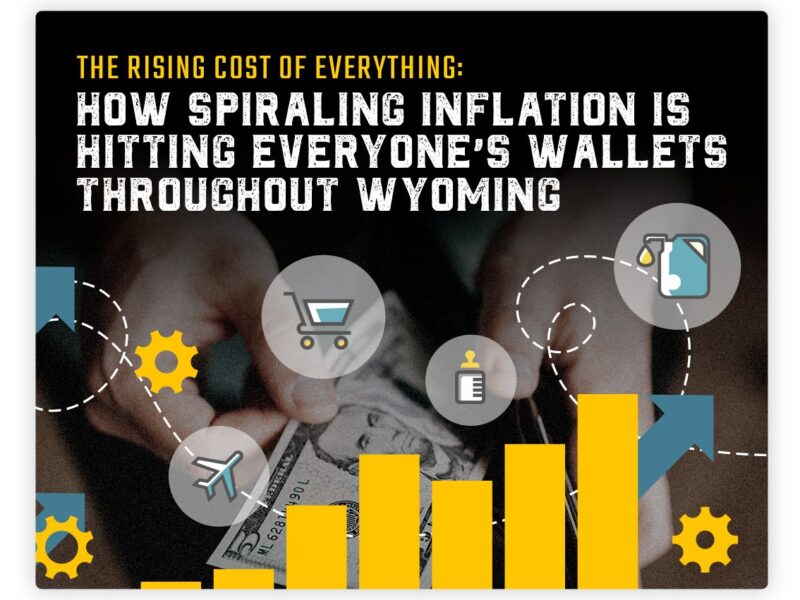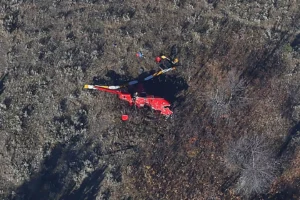THE RISING COST OF EVERYTHING: Tattoo Artists Face Work Burnout, High Expenses
Laramie artist says inflation has been hitting tattoo industry hard for years
- Published In: Other News & Features
- Last Updated: Dec 07, 2022

By Ellen Fike
Special to the Wyoming Truth
Inflation impacted every industry across the board in the United States in 2022, but soaring costs have been an issue in the tattooing world for years, according to Laramie artist Garth Wessel.

In the nearly 17 years that Wessel has worked as a tattoo artist, expenses have climbed by around 40%. Since opening Sagebrush Tattoo three years ago, Wessell has felt the impact of the COVID-19 pandemic and the tight squeeze of inflation.
“Glove costs are double what they were before [the pandemic]; utilities and services have gone up; rent has increased for most people, both businesses and personal; and the cost of all other tattoo supplies continue to rise constantly,” Wessel, 35, told the Wyoming Truth.
“Although it’s had a greater impact recently, inflation and rising costs have been a problem in the tattoo industry for a long time.”
Meanwhile, the rates for tattoo services have hardly changed in the last 17 years, Wessel noted. What other industry can say that?
When Wessel launched his career in 2006, the average hourly rate for creating a tattoo was $100. This is the average today, even though expenses have nearly doubled.
“That means that I should be charging $140 per hour to have a similar quality of life to what I did when I started tattooing,” Wessel said. “And this is not taking into account industry-specific costs, like gloves, have increased far above the national average of inflation.”
In the last 15 years, the amount of work required of tattoo artists also has doubled, Wessel said.
Before tattoo-themed reality TV show such as Miami Ink or Ink Master became popular, tattoos were usually just flash designs selected from a book or a page hanging on the shop’s wall.
But once tattoos became more fashionable and socially acceptable, clients have increasingly sought unique designs. Now, artists must not only spend time tattooing, but also creating one-of-a-kind designs. And the design time is usually not factored into an artist’s rate, Wessel said.
“For me particularly, I put a whole lot of time and work into all of my designs, which forces me to spend nearly every single night and weekend at home working on drawings for people, unpaid,” he said. “I have noticed this starting to lead to major burnout in the entire industry, myself included.”

Wessel said clients have unrealistic expectations of tattoo artists due to reality TV. Since the industry is highly competitive, tattoo shops try to undercut each other on prices, leading clients to shop for bargains.
He encouraged potential customers to avoid the cheapest tattoo option and instead look for quality over hourly rates. Wessel also said tipping generously allows artists to continue to afford their living expenses and have the mental headspace to continue creating works of art.
“Otherwise, as history shows, art will decline as hardship grows,” Wessel said.
While his work inside the shop is still limited to 40 hours a week, Wessel spends another two to five hours per day working on drawings for his clients. This puts his work day at 10 hours, minimum.
Wessel’s bookings have not slowed down, but his tips have decreased in the last six months and some clients have postponed larger-scale work.
Nature-related tattoos are currently the most popular design among Sagebrush clients – a diverse group of all ages and gender identities.
He recently implemented non-refundable deposits, due to the “dramatic” increase of no-shows for appointments in the last year. He also has noticed an increase in potential clients who fail to book appointments once they receive Wessel’s price quote.
Wessel said that he has always been careful with money; he grew up poor in Arizona and invested $10,000 to launch Sagebrush with a mix of a $6,000 loan and $4,000 saved from change he collected over years. As a result, he hasn’t tightened his financial belt much in the past year. But his rent increased about $150 per month since 2020 and his grocery bill and gas expenses have risen about 25%, so Wessel has had to work more to make ends meet.
“My business is doing well and does not experience slow times,” Wessel said. “But I am working incredibly hard and far more hours than a person should have to work in order to keep up with the rising costs of living.”













